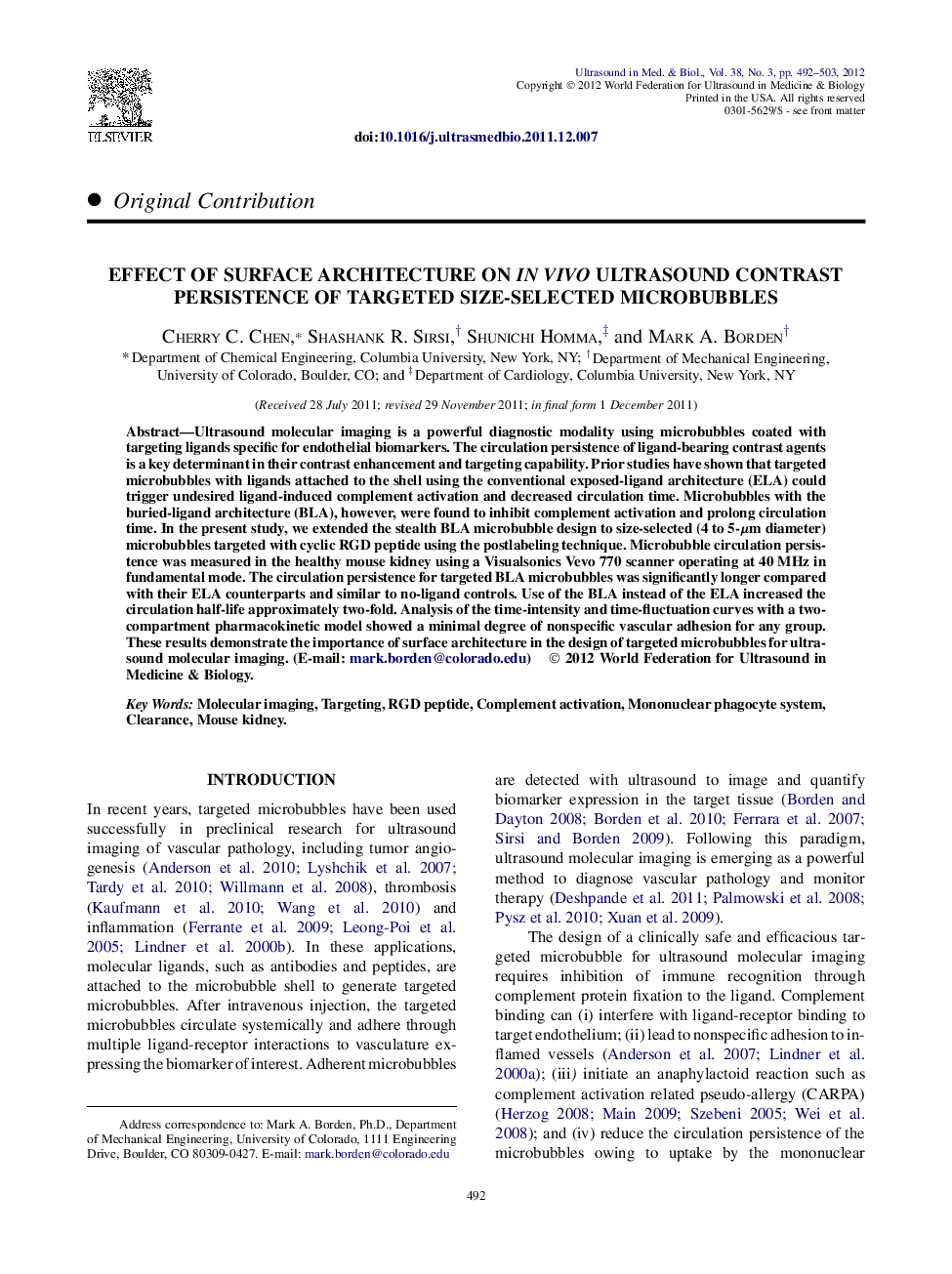| Article ID | Journal | Published Year | Pages | File Type |
|---|---|---|---|---|
| 1760840 | Ultrasound in Medicine & Biology | 2012 | 12 Pages |
Abstract
Ultrasound molecular imaging is a powerful diagnostic modality using microbubbles coated with targeting ligands specific for endothelial biomarkers. The circulation persistence of ligand-bearing contrast agents is a key determinant in their contrast enhancement and targeting capability. Prior studies have shown that targeted microbubbles with ligands attached to the shell using the conventional exposed-ligand architecture (ELA) could trigger undesired ligand-induced complement activation and decreased circulation time. Microbubbles with the buried-ligand architecture (BLA), however, were found to inhibit complement activation and prolong circulation time. In the present study, we extended the stealth BLA microbubble design to size-selected (4 to 5-μm diameter) microbubbles targeted with cyclic RGD peptide using the postlabeling technique. Microbubble circulation persistence was measured in the healthy mouse kidney using a Visualsonics Vevo 770 scanner operating at 40 MHz in fundamental mode. The circulation persistence for targeted BLA microbubbles was significantly longer compared with their ELA counterparts and similar to no-ligand controls. Use of the BLA instead of the ELA increased the circulation half-life approximately two-fold. Analysis of the time-intensity and time-fluctuation curves with a two-compartment pharmacokinetic model showed a minimal degree of nonspecific vascular adhesion for any group. These results demonstrate the importance of surface architecture in the design of targeted microbubbles for ultrasound molecular imaging.
Keywords
Related Topics
Physical Sciences and Engineering
Physics and Astronomy
Acoustics and Ultrasonics
Authors
Cherry C. Chen, Shashank R. Sirsi, Shunichi Homma, Mark A. Borden,
